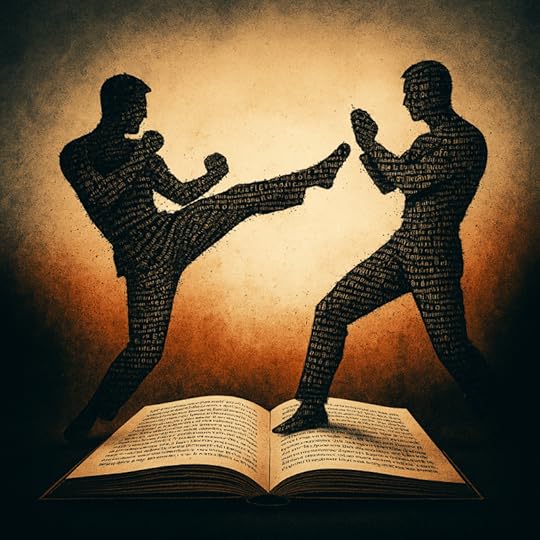Violence on the Page: Consequences, Clarity, and the Temptation to Go Full Tarantino
When Fictional Bite Meets the Narrative Dentist Bill

#writingcommunity #booksky #amwriting #writing Unfettered Treacle on Substack
Violence sells. Books, movies, video games, you name it. If there’s blood, somebody’s making money off it. But writing violence is tricky business, because the moment you put it on the page you’re playing with fire. Done badly, it’s boring or cartoonish. Done lazily, it glamorizes harm. Done well, it reshapes the story and the character in ways that stick with the reader.
So how do we avoid turning violence into empty spectacle?
Violence Shapes Culture
Howard Taylor once said, “Violence is one of the ultimate shaping forces of human culture, and to not write about it is dishonest.”
Wars, revolutions, fistfights in the town square, these things ripple through history and through our characters. If you erase violence completely, you risk writing a world that feels sanitized and fake. Milktoasty.
But that doesn’t mean every book needs a John Wick body count. It means when you do put violence on the page, treat it like it matters.
Violence Without Consequence Is Cheap
Remember the lobby shootout in The Matrix? Beautiful choreography. Long coats flying. Guns blazing. But those guards? Just guys at work. No fallout. Neo and Trinity walk away like they just finished a yoga class.
It’s cool as hell, but it’s also empty.
If your hero mows down faceless henchmen and then goes to lunch like nothing happened, readers notice the disconnect. Violence as performance, not story.
Don’t get me wrong. The Matrix is one of my all-time favorites. And I love me some John Wick, but block buster movies like these and the entire Marvel Cinematic Universe is a genre all its own.
We can admit it, Tarantino shootouts, Marvel’s skyscraper-smashing battles, John Wick gunning down forty guys in a nightclub, it’s a rush. The choreography, the style, the sheer over-the-top bravado is entertaining. But that works best on screen, where music, timing, and visuals can turn mayhem into art. As a novelist you don’t have those shortcuts. To keep readers engaged, written violence needs to do more than entertain. Something has to change, someone is betrayed, a relationship fractures, a belief system buckles. If not all you have is blood and bullets with no story.
Even when the hero “wins,” they carry scars, physical, moral, psychological.
Readers feel cheated if the character walks away unchanged. Violence should leave a mark.
Tone Changes Everything
Violence isn’t always explosions and mayhem. Think Jackie Chan fighting twelve guys with a ladder. Nobody dies, but it’s still fighting, played for laughs. Compare that to Saving Private Ryan, where there was a gut punch at every turn. Same toolbox, different results.
Tone tells the reader what to feel. Horror, humor, tragedy, it’s not just what happens, but how you frame it.
Where’s the Line?
Every writer has to decide how far is too far. The real question is Am I glorifying this in a way that makes readers want to cheer for harm? Or am I making them feel the weight of it?
There’s no one answer. Some writers lean into consequence. Others lean into bravado. Most of us wobble somewhere between.
Almost everyone fears pain and death. That’s why violence works so well for raising stakes. It’s primal. It’s as old as man itself. But every act of violence in your story should carry a bill. Somebody has to pay it. The character, their relationships, maybe even the reader.
The hit isn’t the story. The fallout is.
A Little Homework (Don’t Worry, No Blood)
Try this:
Write the most over-the-top violent scene you can imagine. Go full Tarantino. Then write the morning after. Who buries the bodies? Who cleans up the mess? Who can’t sleep at night?
That’s where the story really lives.



